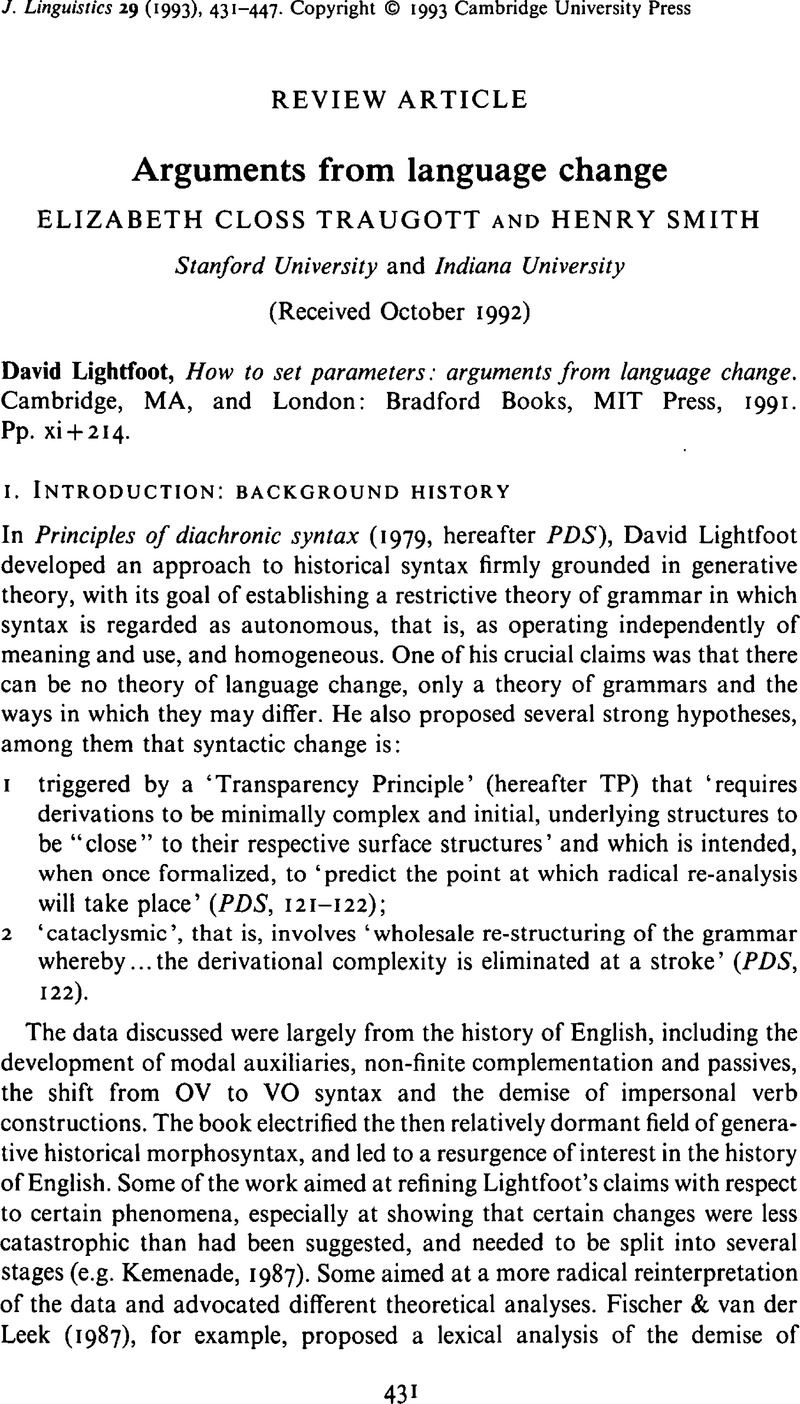Crossref Citations
This article has been cited by the following publications. This list is generated based on data provided by Crossref.
Lightfoot, David
1995.
Grammars for people.
Journal of Linguistics,
Vol. 31,
Issue. 2,
p.
393.
Newmeyer, Frederick J.
2003.
Motives for Language Change.
p.
18.



